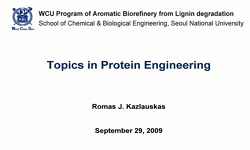The kinetic properties of chitosanase according to chemical and structural modifications of chitosan were evaluated by relative enzyme activity and bioactivity of hydrolysates. Changes in the specificity of the chitosanase for the substrate showed a s...
http://chineseinput.net/에서 pinyin(병음)방식으로 중국어를 변환할 수 있습니다.
변환된 중국어를 복사하여 사용하시면 됩니다.
- 中文 을 입력하시려면 zhongwen을 입력하시고 space를누르시면됩니다.
- 北京 을 입력하시려면 beijing을 입력하시고 space를 누르시면 됩니다.

A Study on the Correlation between Structural Characteristics and Biological Activity of Water-soluble Chitosan
한글로보기https://www.riss.kr/link?id=A108640322
- 저자
- 발행기관
- 학술지명
- 권호사항
-
발행연도
2023
-
작성언어
English
- 주제어
-
등재정보
KCI등재
-
자료형태
학술저널
- 발행기관 URL
-
수록면
51-61(11쪽)
- 제공처
-
0
상세조회 -
0
다운로드
부가정보
다국어 초록 (Multilingual Abstract)
The kinetic properties of chitosanase according to chemical and structural modifications of chitosan were evaluated by relative enzyme activity and bioactivity of hydrolysates. Changes in the specificity of the chitosanase for the substrate showed a significant difference under the optimal reaction conditions. The increase of reducing sugar content according to the activity of the chitosanase was significantly observed against carboxymethyl-chitosan (CM-CTSN) compared to glycol chitosan (GL-CTSN) and water-soluble chitosan (WSC) used as a control. Each chitooligosaccharide designated to COS, CM-COS, and GL-COS showed similar results in various antioxidant activity evaluations so that no significant difference could be confirmed. Significant antibacterial activities of three types of water-soluble chitosanderived COS, CM-COS, and GL-COS against Escherichia coli and methicillin-resistant Staphylococcus aureus (MRSA) were not confirmed. However, both ferric reducing antioxidant power (FRAP) and 2,2’-azino-bis (3-ethylbenzothiazoline6-sulfonic acid) diammonium salt (ABTS) radical scavenging ability confirmed their significant antioxidant activity, but it was evaluated as irrelevant to the difference in molecular weight. Although there is a clear difference in the substrate specificity of the enzyme depending on the chemical structural modification of chitosan, our results suggest that the biological activity of COS was not significantly affected regardless of the presence or absence of a water-soluble functional group. Therefore, based on the results of this study, we suggest the need for follow-up studies to investigate the correlation between the water solubility of chitosan, enzymatic activity, and biological activity.
동일학술지(권/호) 다른 논문
-
꼬마모자반(Sargassum nipponicum)에서 유래한 유효성분의 최종당화산물에 의한 당뇨병성 신경병증 완화 효과
- 한국키틴키토산학회
- 조치홍
- 2023
- KCI등재
-
테일러-쿠테 유동 및 유체충돌 분쇄시스템을 통한 누에고치 실크 나노섬유화
- 한국키틴키토산학회
- 김지혜
- 2023
- KCI등재
-
- 한국키틴키토산학회
- 임미정
- 2023
- KCI등재
-
- 한국키틴키토산학회
- 장유리아
- 2023
- KCI등재




 KISS
KISS






